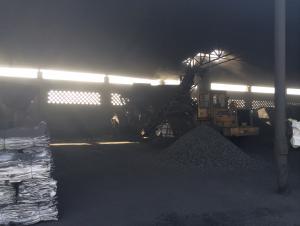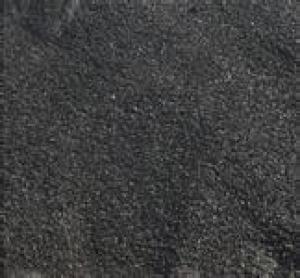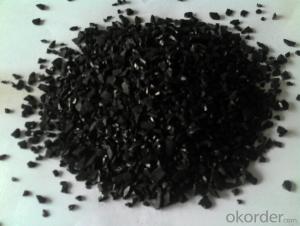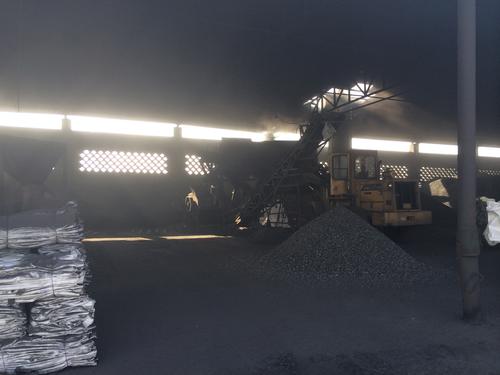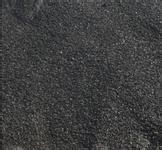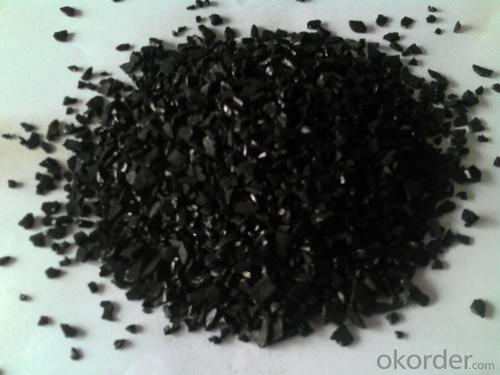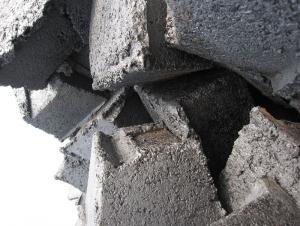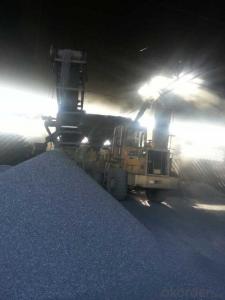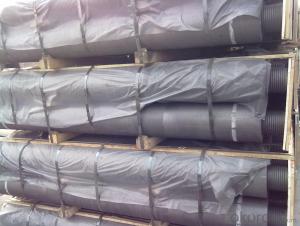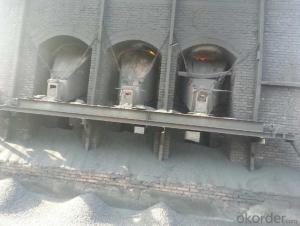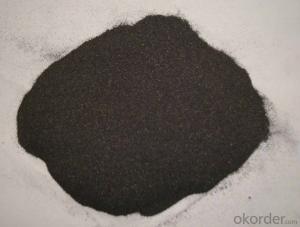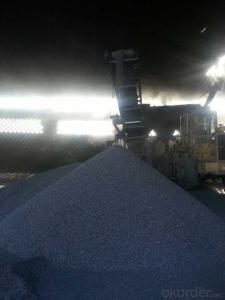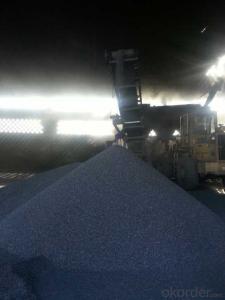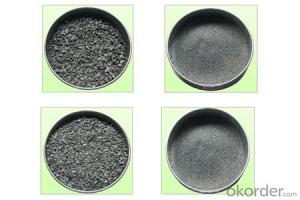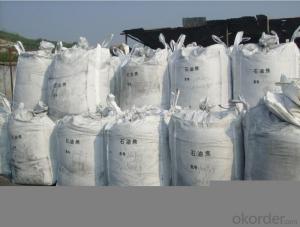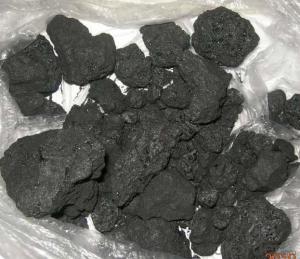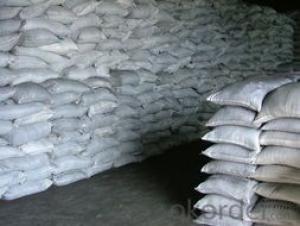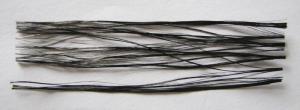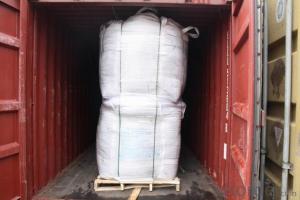Carbon Additive FC 92%/ CNBM Carbon Additive
- Loading Port:
- Tianjin
- Payment Terms:
- TT OR LC
- Min Order Qty:
- 0 m.t.
- Supply Capability:
- 100000 m.t./month
OKorder Service Pledge
OKorder Financial Service
You Might Also Like
Product Description
Carbon additive (carbon raiser) with characteristic of low ash and low sulfur is made from calcined petroleum coke, graphite petroleum coke or high quality anthracite coal . As an ideal recarburizer and intermediate reactor, it has been widely used in different industries like metallurgy, chemistry, machinery, electricity, etc.
The selection of a charging carbon is determined by the quality requirements of the steel or ferroalloy production as well as the cost and availability of carbon products. So the recarburizer is mainly used in the metallurgy to increase the content of carbon.
Packaging & Delivery
| Packaging Details: | 1. carbon additive in 1 MT jumbo bag 2. carbon additive in 25kg PP bag 3. carbon additive in 50 kg woven bag 4. carbon additive in bags then put them on pallet 5.bulk in container 6.as your requirements |
| Delivery Detail: | within 10 days after receiving 30% deposit or LC |
Specification
Carbon | Min98% |
Ash | Max0.5% |
Sulphur | Max0.05% |
V.M | Max0.5% |
Moisture | Max0.5% |
N | Max0.03% |
H | Max0.01% |
Sizes(mm) | 1-5 1-3 3-10 1-10 |
Calcined petroleum coke as carbon additive
Carbon | Min89% |
Ash | Max0.3% |
Sulphur | Max6% |
V.M | Max10% |
Moisture | Max8% |
N | Max0.03% |
H | Max0.01% |
Sizes(mm) | 1-5 3-8 5-15 10-20 |
Calcined anthracite coal as carbon additive
Carbon | Min90-95% |
Ash | Max5% |
Sulphur | Max0.5% |
V.M | Max1.5% |
Moisture | Max0.5% |
N | Max0.03% |
H | Max0.01% |
Sizes(mm) | 1-5 3-8 1-3 |
Pictures of Calcined AnthraciteCoal
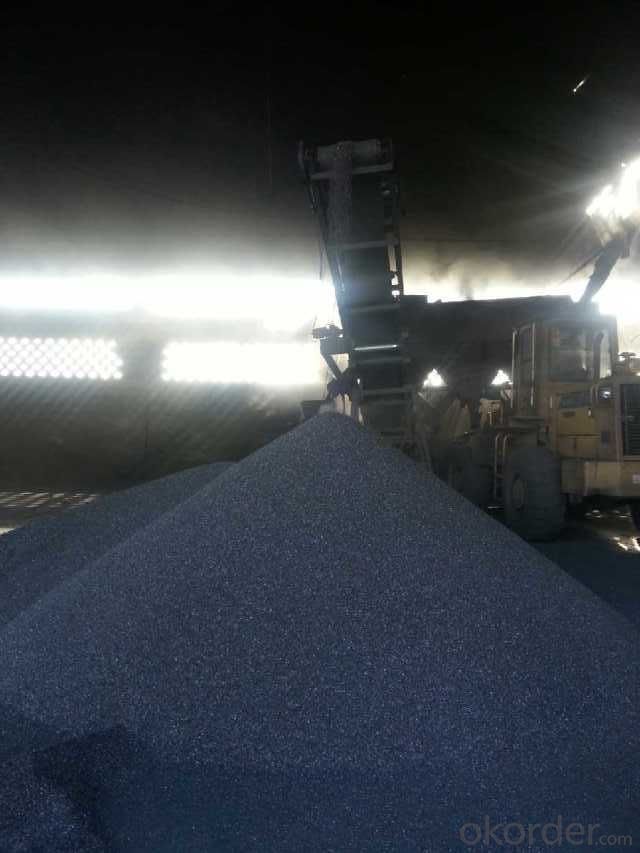

- Q: What are the consequences of increased carbon emissions on technological advancements?
- Increased carbon emissions can have both positive and negative consequences for technological advancements. On the positive side, a greater emphasis on reducing carbon emissions has stimulated innovation in clean technology and renewable energy sources. This has resulted in advancements in technologies like solar panels, wind turbines, and electric vehicles, which are considered more environmentally friendly alternatives to traditional energy sources. These advancements have the potential to create new industries, generate jobs, and foster sustainable development. However, increased carbon emissions can also have detrimental effects on technological advancements. The elevated levels of carbon dioxide in the atmosphere contribute to climate change, which poses significant challenges for various sectors, including technology. Extreme weather events, such as hurricanes and wildfires, can cause damage to infrastructure and disrupt technological systems. Additionally, higher temperatures can impair the efficiency of electronic devices, leading to increased energy consumption and decreased performance. Furthermore, the need to address climate change and develop clean technologies requires substantial financial investments. This can divert resources from other areas of technological innovation and research, thereby limiting progress in fields like artificial intelligence, biotechnology, or space exploration. Consequently, the focus on reducing carbon emissions may hinder overall advancements in certain technological areas. In conclusion, the consequences of increased carbon emissions on technological advancements are intricate and multifaceted. While they have driven innovation in clean technologies, they have also presented challenges and trade-offs in terms of resource allocation and the impact of climate change on technological infrastructure. Therefore, efforts to reduce carbon emissions must be balanced with the imperative of continued progress in other technological fields in order to achieve a sustainable and technologically advanced future.
- Q: How is carbon formed?
- Carbon is formed through various natural processes, primarily through the decay and decomposition of organic matter such as plants and animals. Additionally, carbon can be formed through volcanic activity and the burning of fossil fuels.
- Q: How is carbon used in the production of plastics?
- Plastics heavily rely on carbon, an indispensable ingredient, for their manufacturing. These polymers consist of extensive chains formed by repeating units, known as monomers. These monomers, in turn, consist of smaller molecules. Carbon atoms constitute a vital element in these monomers, serving as the foundation for the polymer chain. To acquire carbon for plastic production, diverse petroleum products, like crude oil and natural gas, are sourced. These fossil fuels contain hydrocarbons, which are organic compounds comprised of carbon and hydrogen atoms. Through a refining process called cracking, hydrocarbons are broken down into smaller molecules, including ethylene and propylene, which serve as the basic building blocks for numerous plastic types. Once these monomers are acquired, they are polymerized, meaning they are chemically bonded together to create lengthy chains. Carbon atoms play a critical role in this procedure, as they connect to shape the backbone structure of the polymer chain. The specific arrangement and bonding of carbon atoms dictate the properties of the resulting plastic, including its strength, flexibility, and durability. It is worth noting that while carbon is crucial, not all plastics are exclusively composed of this element. Other elements, such as oxygen, nitrogen, and chlorine, may be present in the monomers or introduced during production to enhance specific properties or introduce desired functionalities. All in all, carbon serves as a fundamental element in plastic production. It establishes the backbone structure, enabling the versatility and wide array of applications of plastic materials across various industries.
- Q: Often see the so-called 30T, 46T, 60T carbon fiber, 60T carbon fiber, equivalent to T hundreds of carbon fibers, is T800, or T1000? I'm not very good at parameter conversion. Is there a parameter list? How do I correspond to the T300T700T800 performance parameter table?
- Three, T300, T700, T800, T1000 intensity were 3530MPa, 4900MPa, 5880MPa, 6370MPa;The intensities of M46 and M60 were 4020MPa and 3820MPa respectively.
- Q: How are fossil fuels formed from carbon?
- Fossil fuels are formed from carbon through a natural process that takes millions of years. When plants and organic matter die, they get buried under layers of sediment and undergo decomposition. Over time, intense heat and pressure from the Earth's crust transform this organic matter into fossil fuels such as coal, oil, and natural gas. These fuels contain stored energy in the form of carbon compounds, making them valuable sources of energy when burned.
- Q: The dangers of grilled BBQ on humansWhat are the dangers of a charcoal barbecue?
- Many people may be skeptical - burnt food really carcinogenic? The American Cancer Society will actively publicly called for "eat barbecue foods, because according to the result of medical research, a piece of a pound (about three steaks) barbecue steak, enough to produce carcinogenic substances the equivalent of six hundred cigarettes, which is one reason why many people do not smoke get lung cancer.According to animal experiment confirms that burnt food can lead to animal cancer.
- Q: How do human activities contribute to carbon emissions?
- Carbon emissions are contributed to by human activities in several ways. One of the main sources of carbon dioxide emissions is the burning of fossil fuels for electricity, transportation, and industry. When coal, oil, or natural gas is burned, carbon is released into the atmosphere. Additionally, carbon emissions are also caused by deforestation and changes in land use. Trees play a critical role in absorbing carbon dioxide, so when forests are cleared for agriculture or urbanization, the stored carbon is released back into the atmosphere. Furthermore, carbon emissions are released through industrial processes such as cement production and chemical manufacturing. Lastly, methane, a powerful greenhouse gas that contributes to global warming, can be produced through human activities like agriculture and livestock farming. In conclusion, our reliance on fossil fuels, deforestation, industrial processes, and certain agricultural practices all contribute to carbon emissions, worsening the problem of climate change.
- Q: Made of high strength structural partsThe market quality of the carbon fiber plate is too much, the price is low, do not know how to choose. A knowledgeable friend can introduce larger enterprises? The quality of the carbon fiber board produced must be better and the performance should be stable!
- You are not for the prestressing bar, if you find the building reinforcement for Tianjin Beijing card, if you do the structure reinforcement for Jiangsu and Wuxi via the new material industry, these are relatively well-known.
- Q: How is carbon used in the production of paints?
- Carbon is used in the production of paints as a pigment or coloring agent. Carbon black, which is made from the incomplete combustion of petroleum products, is commonly used to provide a deep black color to paints. It is also used in the form of graphite to create black or gray shades. Additionally, carbon-based materials like activated charcoal are used as fillers or extenders in certain types of paints.
- Q: How does carbon impact the availability of clean air?
- The availability of clean air is impacted by carbon, which contributes to air pollution and climate change. Burning carbon-based fuels like coal, oil, and natural gas for energy production releases carbon dioxide (CO2) into the atmosphere. CO2 is a greenhouse gas that traps heat in the Earth's atmosphere, causing the planet to warm up and leading to climate change. Air quality is affected by climate change in various ways. Increasing temperatures can raise the frequency and intensity of wildfires, which release significant amounts of carbon dioxide and other pollutants into the air. Moreover, higher temperatures can worsen the formation of ground-level ozone, a harmful air pollutant that can trigger respiratory problems and other health issues. Furthermore, carbon emissions contribute to the creation of particulate matter, including soot and fine particles, which can be harmful when breathed in. These particles originate from the combustion of fossil fuels in vehicles, power plants, and industrial processes. Inhaling particulate matter can result in respiratory and cardiovascular problems, particularly affecting vulnerable populations such as children, the elderly, and individuals with pre-existing respiratory conditions. To improve air quality and ensure the availability of clean air, it is crucial to reduce carbon emissions. This can be achieved by transitioning to renewable energy sources, enhancing energy efficiency, and implementing policies to decrease carbon emissions. Additionally, promoting sustainable transportation, reducing deforestation, and adopting cleaner industrial practices can contribute to cleaner air by reducing carbon emissions and other pollutants.
Send your message to us
Carbon Additive FC 92%/ CNBM Carbon Additive
- Loading Port:
- Tianjin
- Payment Terms:
- TT OR LC
- Min Order Qty:
- 0 m.t.
- Supply Capability:
- 100000 m.t./month
OKorder Service Pledge
OKorder Financial Service
Similar products
Hot products
Hot Searches
Related keywords
